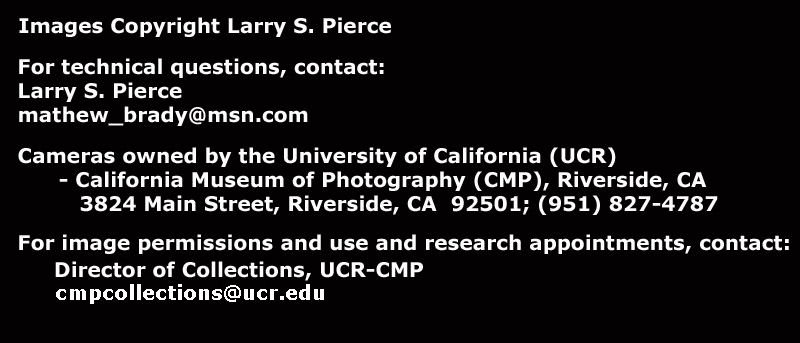Scovill Mfg. Co.
American Optical Company
View Camera Boxes Transitional to the 76 Camera
***Identified: American Optical Model Stereo View Camera***
4¼ x 6½". Rear focusing,
straight bellows like
The 76 Camera,
but push-pull focus and center swing and different hardware than
The 76.
It bears an American Optical Co. stamp, and has typical American Optical
characteristics: smooth and shiny French polish finish on the wood, draw
file finish on the hardware, and screw slots laboriously aligned with
the long side of hardware.
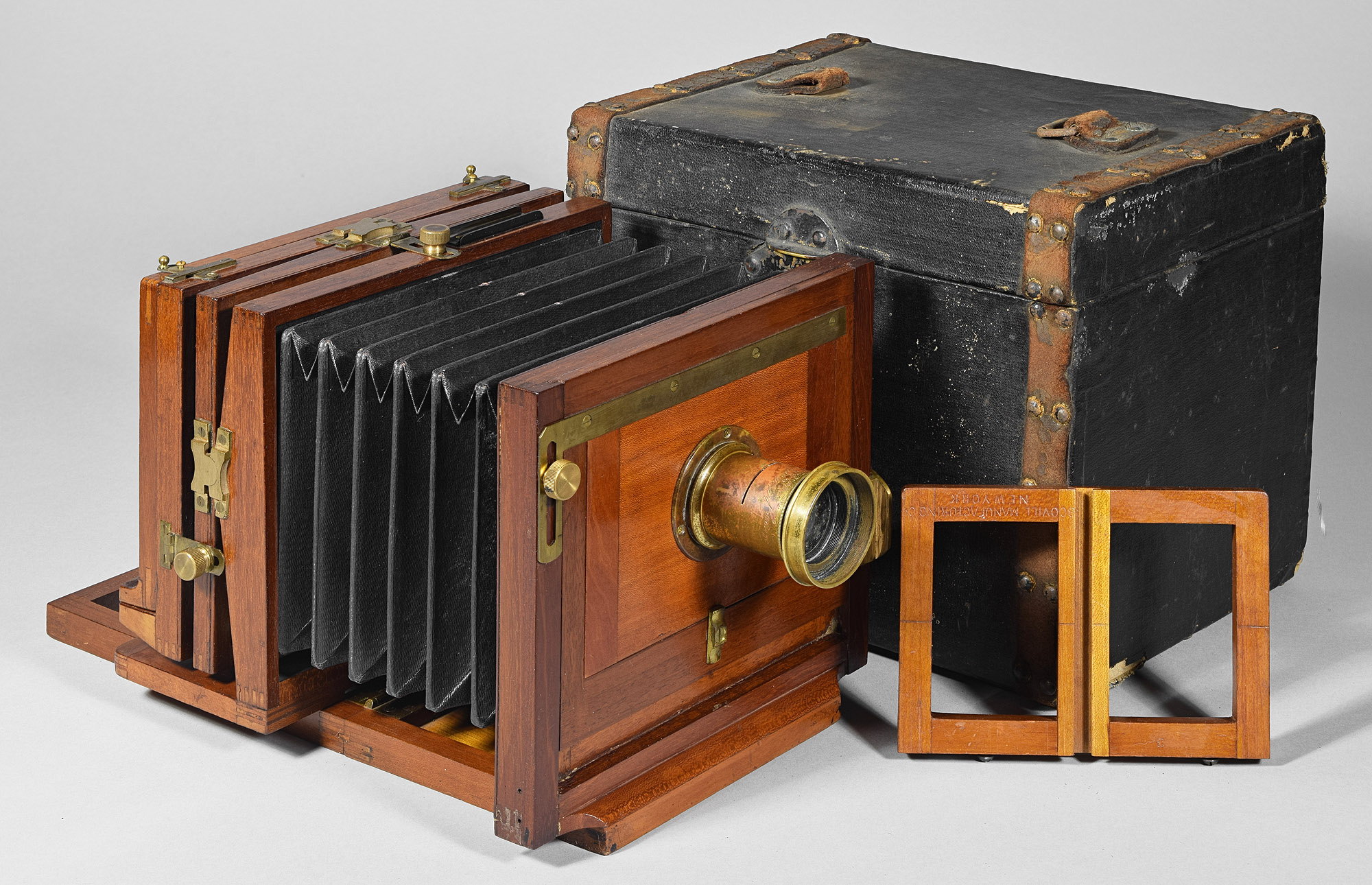
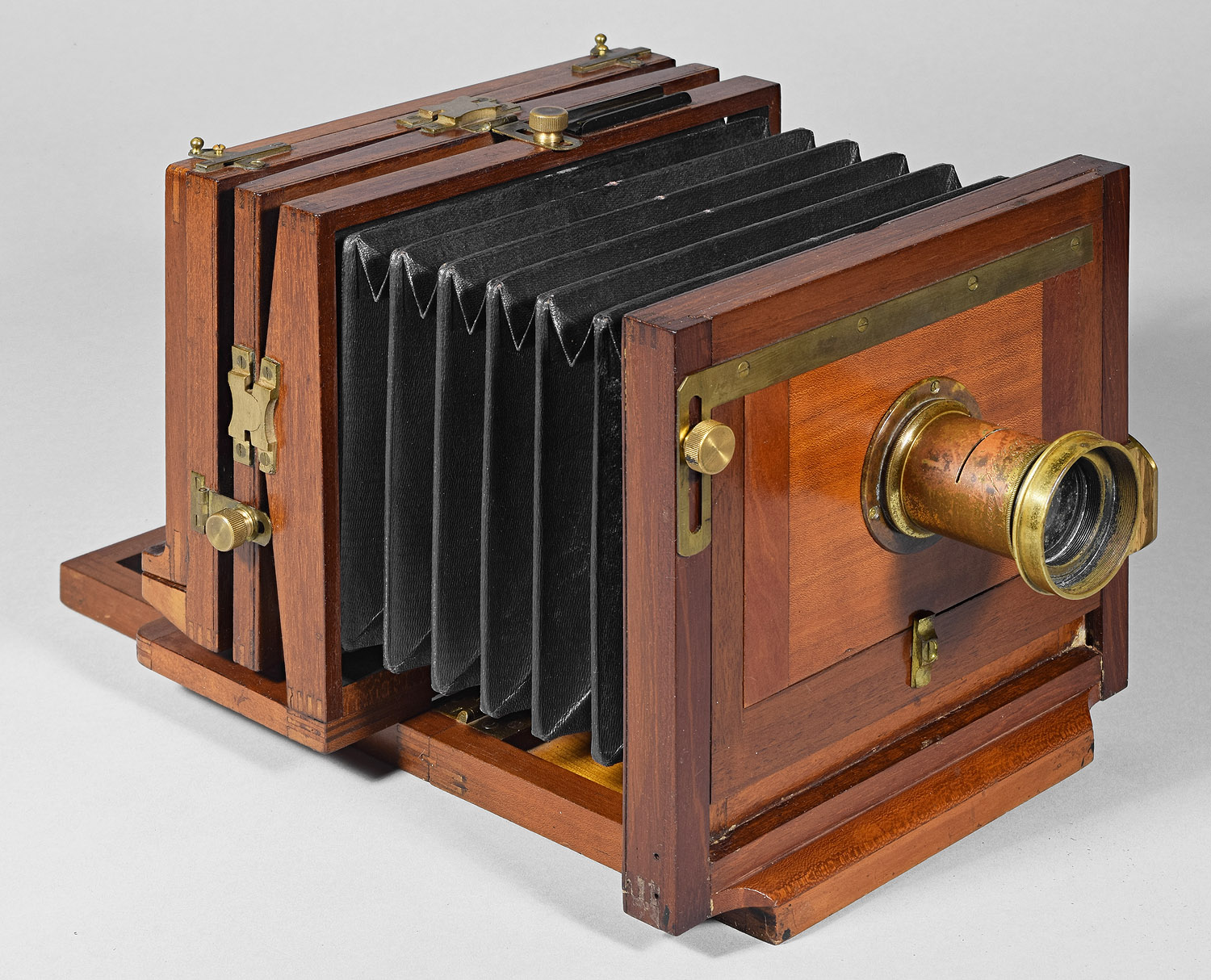
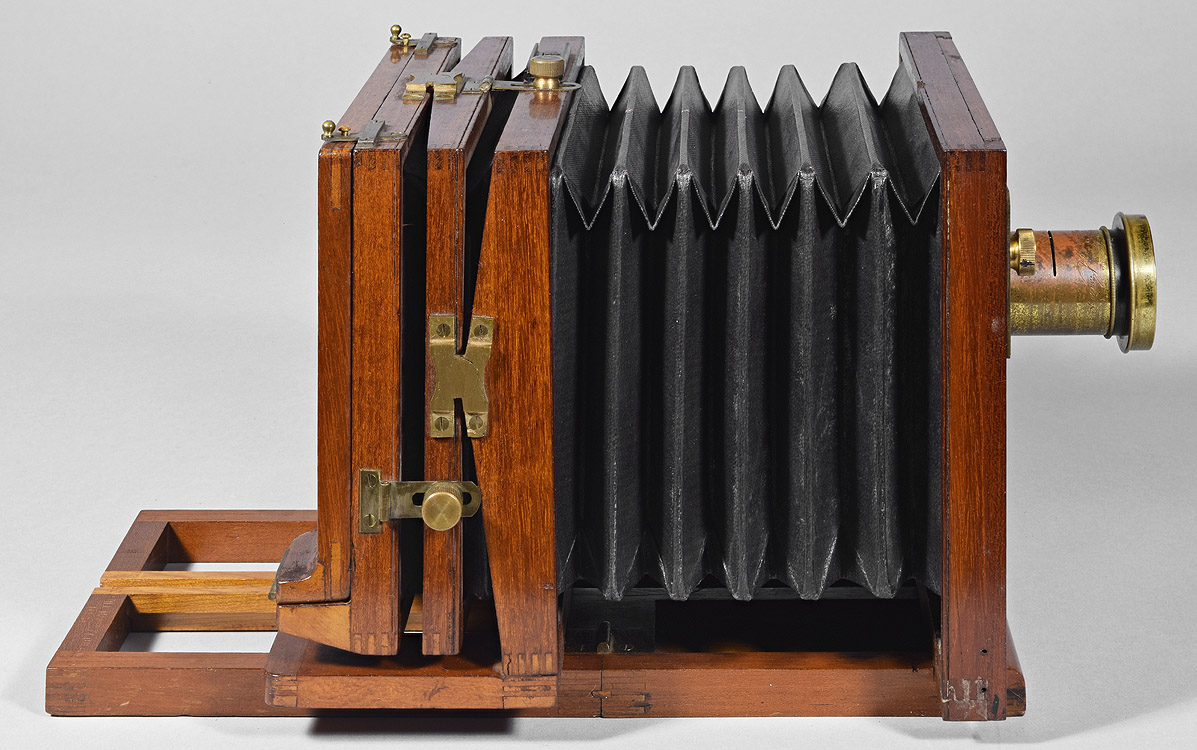
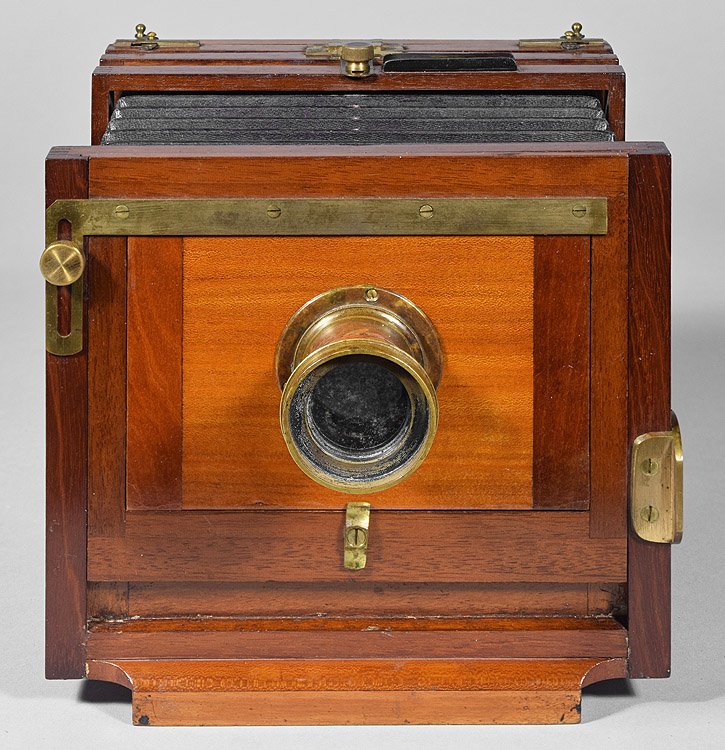
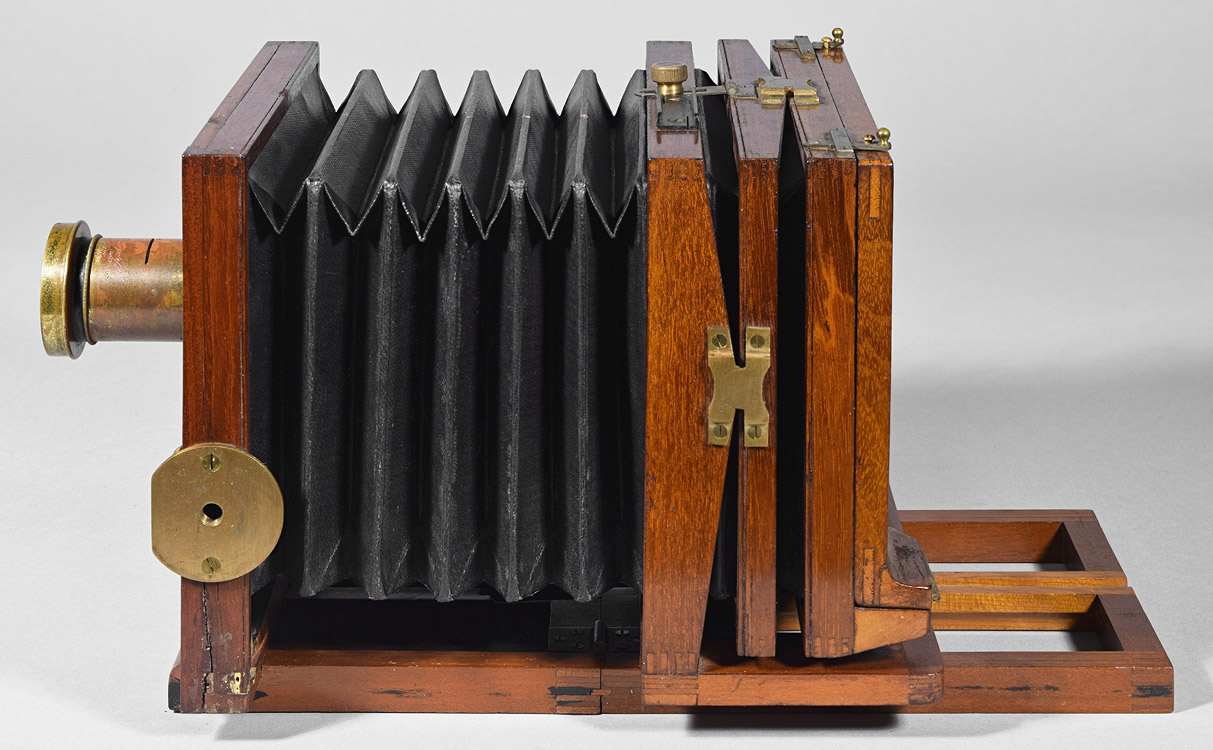
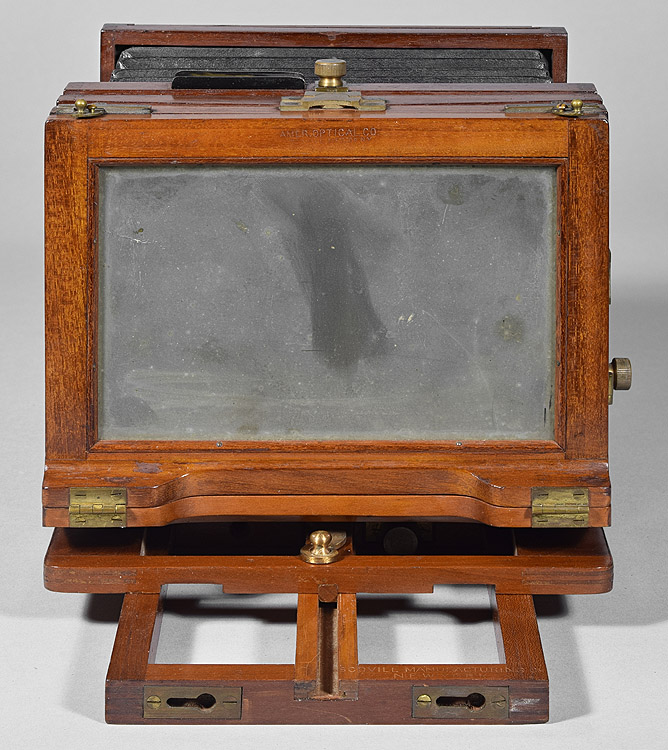
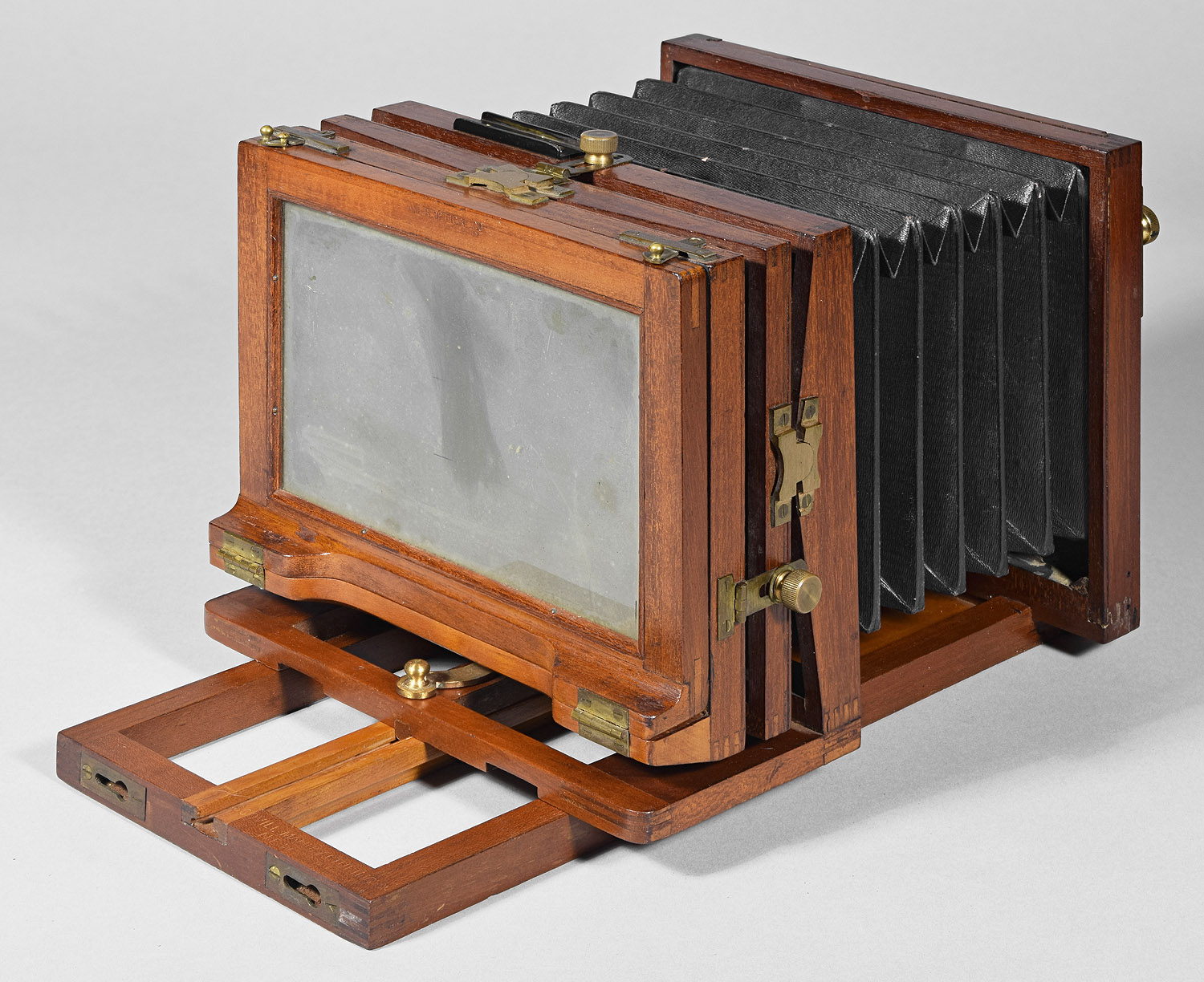
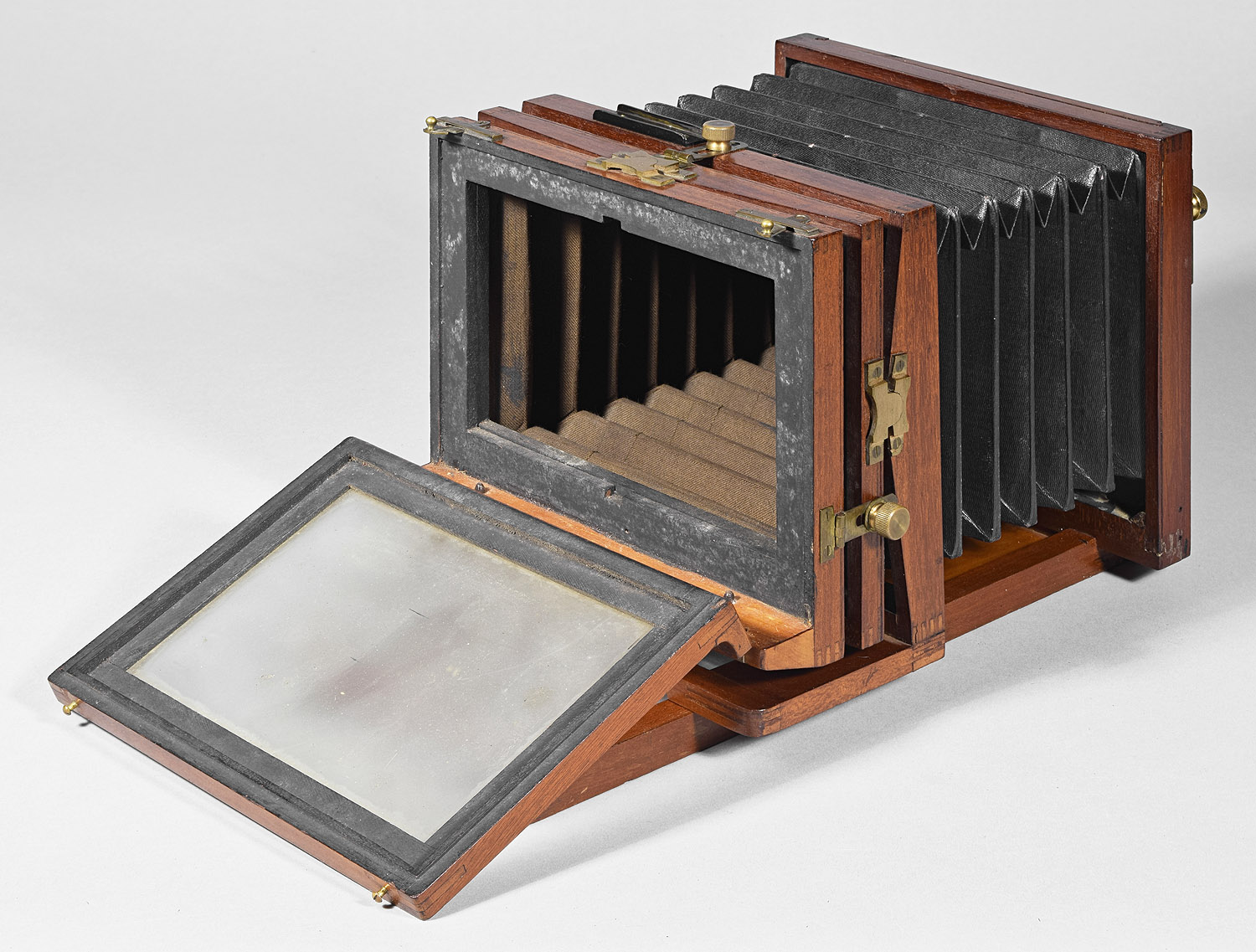
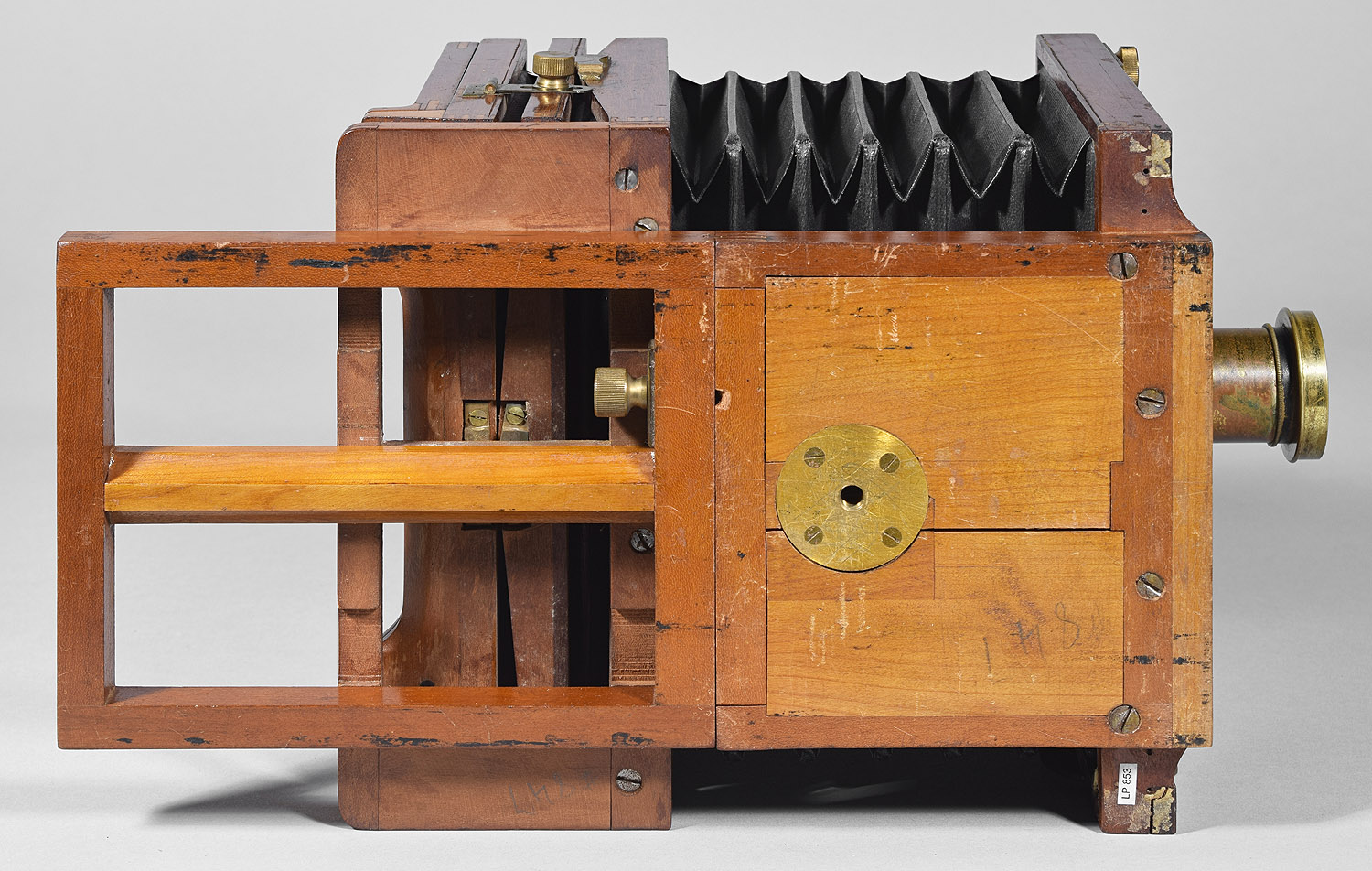
Stamp
near the top of the ground glass frame: "Amer. Optical Co., Scovill Mfg.
Co., N.Y." (not fully visible, but a common stamp for American
Optical cameras to have.

Both
the hinged section and the detachable rear extension section have two
stamps: 1) the assembly number "3", and 2) "Scovill Manufacturing Co. -
New York".
The Scovill stamp having the word Manufacturing: spelled out is
an early form. By about 1885, a one-line stamp was in use having
the abbreviation Mfg.
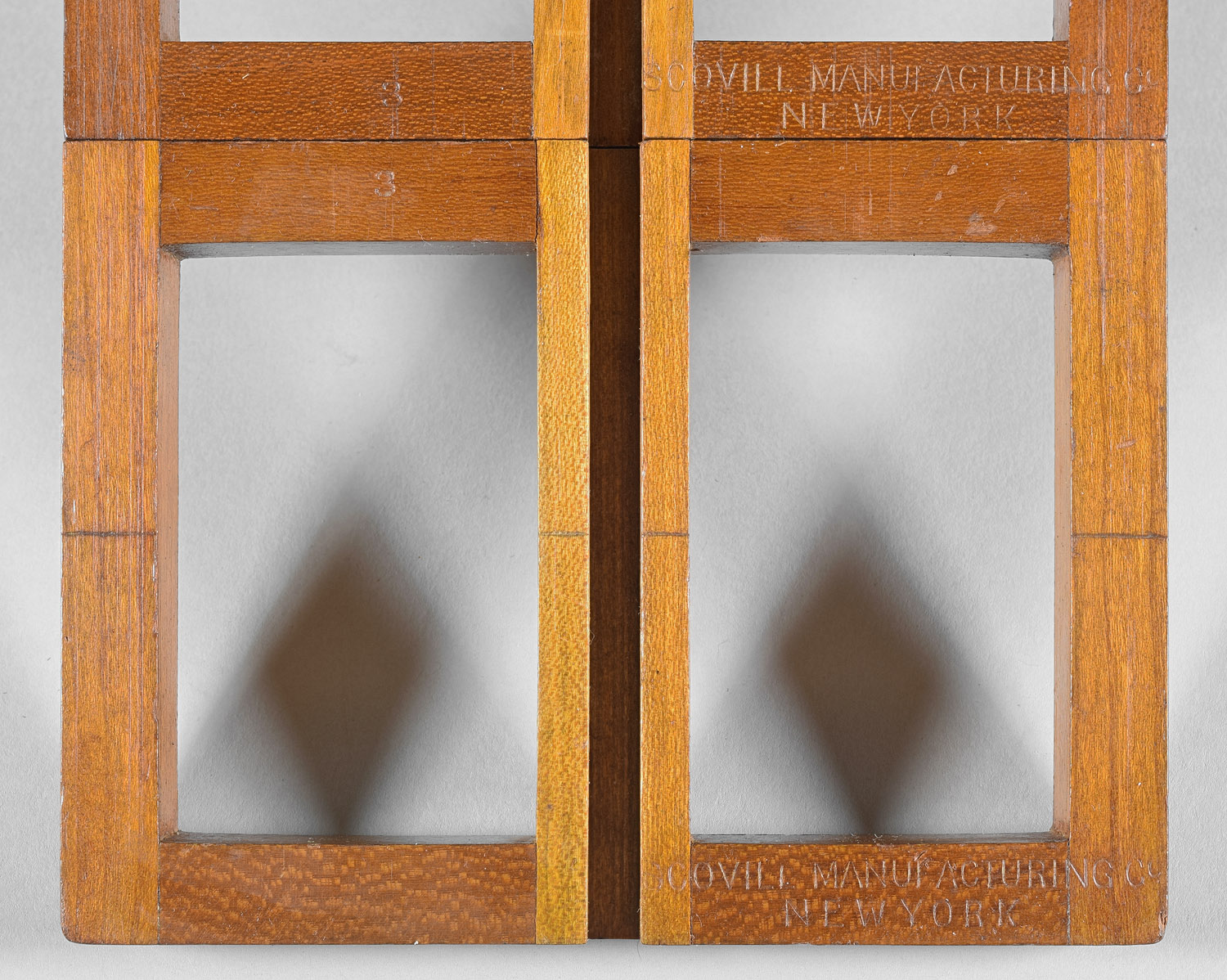
Stamp
on the rear standard platform: "3", an assembly number matching the
others on the camera.
Note that the focus is sharp from the top of the camera to the bottom
despite the closeness of the view. This cannot be achieved in the
camera, but is the result of combining, using a computer program, the
sharp areas of 12 images, each taken at a different focus. Such
programs are commonly used for photomicrographs in science.

Two paper
labels on the inside cover of the case. The first was oval, and is
the label of Crouch & Fitzgerald of
New York, a high end luggage maker
(supplying to such customers as Washington Irving, Henry Clay Frick, the
Vanderbilt family, and John F. Kennedy),from 1839 for more than 150
years.
The Crouch & Fitzgerald tag has been covered by a round tag on which can
be seen: "W. Q--n, Photographic
Materials 61 Williams St., New York, NY".
This is undoubtedly a New York office of the firm of James W. Queen &
Co. of Philadelphia, a large photographic equipment supplier.
Queen & Co. sold cameras manufactured by a variety of companies,
including Scovill Mfg. Co., Rochester Optical Co., E.&H.T. Anthony &
Co., and The Eastman Co. (see
Queen's 1891 catalog).
This camera does not appear in the few Queen & Co. catalogs that I have
seen.
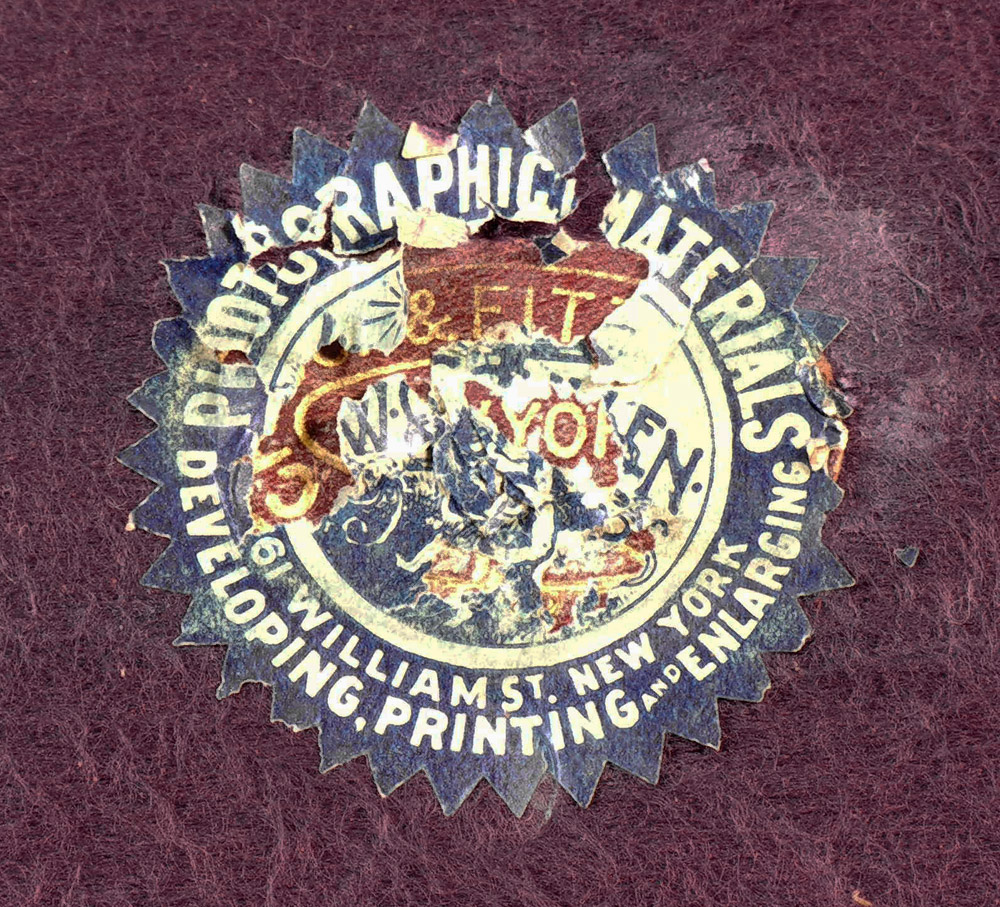
Manufacturer:
American Optical Co. New York, NY factory The photographs above are
of a 4¼x6½" camera in a period case. The camera was purchased in
August of 2011, on-line. 2011 Analysis: The camera has straight
(rather than tapered) bellows, and a double tilt mechanism involving two
sliding thumbscrews, also seen on the c.1886
Flammang's
Patent Revolving Back Camera. The focus is push-pull on a plain
wooden track (no brass guides), tightened by a lever screw mechanism.
The front rise is protected by a metal surround that doubles as the top
lens board retainer. The camera has the careful fit and beautiful
and smooth French polish finish of the typical American Optical product.
The case has a label from Crouch & Fitzgerald of New York (luggage
makers, founded 1839), over which has been placed a label from J. W.
Queen, 61 Williams St., New York (see
1891 Jas. W. Queen catalog). Even as identified as an
American Optical product, it has a configuration unlike any advertised
straight bellows models, of which there are only a few:
The 76 Camera,
the
Kilburn Gun Camera, the early
AO View
Camera Box. It seems to be an AO
View Camera Box transitional to The 76 Camera. 2023 Analysis: In 2023, I found a catalog showing an engraving
of the Model Stereo View Camera, having never had such a visual record
of the Model Stereo before. The description of the Model Stereo is
that it is "the same design and appearance is the same as
The 76 Camera".
It turns out that the above camera is pretty much the same as the Model
Stereo engraving, except that the camera is push-pull focus, whereas the
engraving is rack and pinion focus. The same misconnect between
push-pull and rack and pinion focus can be found for The 76 Camera,
where engravings appear to be push-pull and the cameras are usually rack
and pinion. So, all-in-all, this camera is probably the
Model Stereo (see Model Stereo web page). References:
Back to American Optical
Co. / Scovill Mfg. Co. (alphabetical)
Date Introduced: ; Years
Manufactured: c.1876
Construction: rear
focus via push-pull; double
swing; reversing via second tripod screw;
three-piece lens board
Materials: mahogany body; cherry base;
black fabric bellows; brass hardware
Sizes Offered: 4¼x6½;
Notes:
- It is double swing, like the View Camera Boxes,
but uses a different device for the left-right swing.
- It has a focus-tightening lever, like The 76
Camera, but unlike the focusing screw of the View Camera Boxes.
Focusing screws seem to be a wet plate/early dry plate-era device.
- It does not have brass plate strengthening/wear
shields on its front, as are present on View Camera Boxes,
Neither this camera nor The 76 Camera have them.
Such brass plates also seem to be a wet plate/early dry plate-era
feature.
- It has a short rear extension for the base.
No advertised AO straight bellows model has such a base extension.
It was probably a special order for a pet lens, although the lens
currently installed does not require the extension, having a back focal
length of only 9-10 inches.
